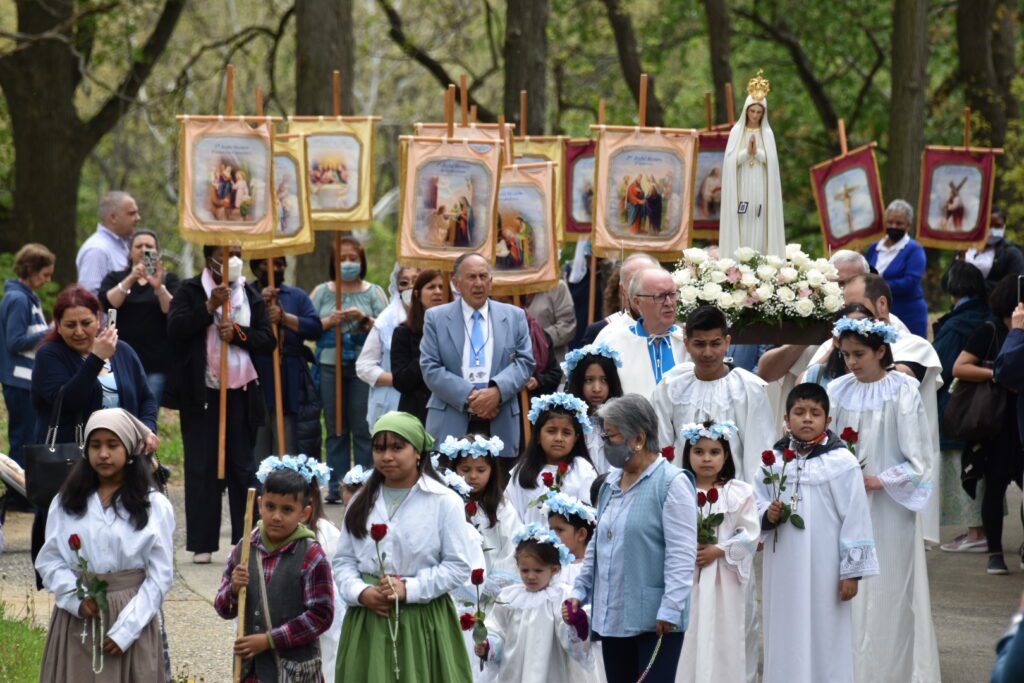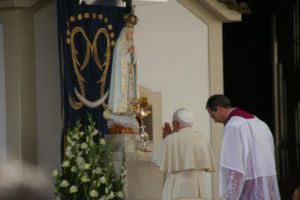

by Donal Anthony Foley –
We recently celebrated the feast of the Baptism of the Lord, representing the transition from the Christmas season, with its focus on Jesus’ infancy, to His public ministry. This feast is also a reminder of the vital importance of our own personal baptism, which freed us from the effects of Original Sin and made us children of God.
From St. Matthew’s Gospel, the Baptism of Jesus is brief, but very meaningful: “Then Jesus came from Galilee to the Jordan to John, to be baptized by him. John would have prevented him, saying, ‘I need to be baptized by you, and do you come to me?’ But Jesus answered him, ‘Let it be so now; for thus it is fitting for us to fulfill all righteousness.’ Then he consented. And when Jesus was baptized, he went up immediately from the water, and behold, the heavens were opened and he saw the Spirit of God descending like a dove, and alighting on him; and lo, a voice from heaven, saying, ‘This is my beloved Son, with whom I am well pleased’” (Mt 3:13-17).
The first thing to notice is the humility of Jesus. Even though He was the Messiah, the Son of God and in no need of baptism, He presented Himself before the Baptist. Then, there is what happened immediately after the baptism—the opening of the heavens, the descent of the Spirit and the voice of God the Father proclaiming that Jesus was His beloved Son.
Aspects of this event take us right back to the very beginning of the Bible and the creation of the universe: “In the beginning God created the heavens and the earth. The earth was without form and void, and darkness was upon the face of the deep; and the Spirit of God was moving over the face of the waters. And God said, ‘Let there be light’; and there was light’” (Gn 1:1-3).
The descent of the Holy Spirit over the waters of the Jordan River at Jesus’ baptism parallel the primeval waters over which the Spirit of God moved, while the voice of the Father declares the “Word”, His beloved Son, in the same way He declared the light and all that followed in Creation.
Another intriguing comparison can be made to what happened at Fatima on Oct. 13, 1917, when Our Lady performed the miracle of the sun at the Cova da Iria in the presence of tens of thousands of astonished spectators.
Torrential rain had fallen all night as the 13th dawned, and the bad weather erupted again as the time for the final apparition drew near. Around noon, the sky was dark and cloudy, and after Our Lady had appeared and delivered her message to the children, Lucia suddenly cried out, “Look at the sun.” The vast crowd turned to see the black clouds overhead part, and the sun, looking like a dull gray disc, started to gyrate in the sky and plunge toward the earth, before finally returning to its accustomed place in the heavens.
We can see a number of points of connection between this stupendous miracle and the events at Jesus’ baptism. Both were very public miraculous events, and indeed the miracle of the sun had been prophesied months in advance by Our Lady, which accounted for the huge crowds that day. And just as the biblical account tells us the “the heavens were opened” and John the Baptist saw the Holy Spirit descend in the form of a dove on Christ, so at Fatima, the black clouds parted to reveal the heavens and the sun descended towards the earth in a way that mesmerized the crowd.
At the Jordan River, the descent of the Holy Spirit was accompanied by the voice of the Father telling John and all who heard that this was His Son, “in whom He was well pleased.” At Fatima, the voice of Our Lady calls the world to return to God and stop offending His Son, while at the same time, the sun descends in a visible and truly awe-inspiring manner, emphasizing the truthfulness and urgency of this message. Given the nature of the solar miracle, one might imagine the Father saying, “This is my beloved Daughter in whom I am well pleased.”
Following His baptism, Christ ascends from the waters of the Jordan opening the way to heaven. So at Fatima we might say that the torrential rains that fell before the miracle of the sun were a sort of “re-baptism” for the people of Portugal, a great reminder of their commitment to Christ as a country, one that Our Lady had come to renew.
And just as the dove and the voice of the Father were a sign to the people of Israel that their Messiah and God was in their midst, so the miracle of the sun is a sign for our times that Our Lady is also in our midst as the Mother of the Church. If we will let her, she is more than willing to display her great power and come to our aid.
Donal Anthony Foley is the author of a number of books on Marian Apparitions, and maintains a related web site at www.theotokos.org.uk. He has also written two time-travel/adventure books for young people, and the third in the series is due to be published later this year – details can be seen at: http://glaston-chronicles.co.uk.











